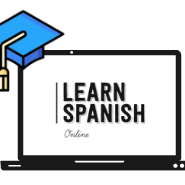Yes, of course I’ll tell you!
First of all, thank you for your interest. In this post I’m going to describe you the structure of my classes. As you know, I only teach online. So I click the start meeting button and the camera in 3, 2, 1 turns on. I see my student, say hello. Next, I hear his/her voice and his/her response. These first few seconds allow me to understand how is our mood today. I never want to start by asking about the conjugation of verbs, so I always ask how are you today, it’s a very genuine question! If my student is sad, I see it as an opportunity to acquire new words and if not, I also have the opportunity to listen to what makes him/her feel so good.
Many times, I prepare a small presentation with 5-6 slides that have structures that we use frequently or structures that we will need to understand the next class activity, e.g. What did you during the weekend? Most of my students are beginners, so I am in charge of providing the input they need to speak. With these questions I am looking for my students to acquire vocabulary that they can use in a conversation with anyone who asks about the weekend. This activity lasts approximately 10 minutes.
After exchanging what we have done over the weekend, my students are immersed in the Spanish atmosphere. So we have already warmed up and are ready to start our class.

I tell you in case you don’t know, I teach with TPRSCI (Teaching Proficiency through Reading and Storytelling and Comprehensible Input) strategies. So my next activity will be focused on providing Spanish structures with the use of high frequency verbs, for example: tener, querer, poder, haber, estar, hacer, ir. You will never see me asking you (if you are my student) to conjugate these verbs artificially. I like communication to be very natural, so I introduce these structures through stories.
I tell you here a story so you can see an example of what we do in class:
One day a girl went to karate and didn’t like it. The next day, the girl went to school and in math class she did very poorly. In history class she did poorly, then in art class she did poorly. She also did poorly in music class and science class. She went home and then she went to karate and she also did poorly in karate because it was very very difficult. She went home and she practiced and it was bad because she hit the wall and broke the wall. She kicked the chairs and they fell down. Then she tried to do a flying kick, she started running to the wall, did the flying kick and she left a hole in the wall. The parents were not home. Then the girl went to the kitchen and hit the dishes. The parents came back to the house and they saw the hole in the wall and said, “Whaaaat? The parents called the wall repairmen and they said they couldn’t fix the wall. The next day a tornado came and knocked the house down, except for the basement. Then a flood came and they had to go live in a neighbor’s house. The girl’s house was repaired and they were able to return to their home.
This story was co-created with one of my students. When we create the story, we usually create it in the present tense and as we create, I am writing what is happening. Some stories may take us several sessions to create, but per session, we take about 20-25 minutes.
Then we take a very short break to oxygenate our brain.
Then, we will reread the story we have created and then the student can write during the last 10 minutes of class the new words learned. As “homework”, the student reads the same text that we have co-created in class, but this time it will be in the past tense to acquire in a natural way the different forms of the verbs and not fall short when we want to speak because we do not know the forms of the future, present or past in Spanish.
By this time, the session time is over. We say goodbye and look forward to seeing each other soon.
As you can see the classes are focused on providing comprehensible input through stories and developing the 5 competences: oral and written comprehension, oral and written production and interaction.
In this session we have created a story, but it is not always the same, the activities change, we can listen to a story, watch a video, make an origami while creating a story, we can describe a picture.
I always want the students to be motivated. For this reason, the dynamics of the class is always different. After receiving input, the students can do a cartoon, a dictation, a reading comprehension through games, among other activities.
